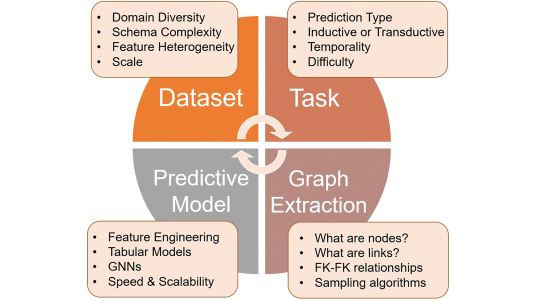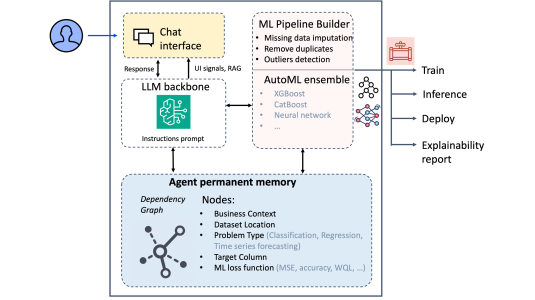The International Labor Organization estimates that today, more than 24.9 million people around the world are victims of human trafficking. Nearly 20% of these victims are sexually exploited.
According to the U.S. State Department 2019 Trafficking in Persons Report, 7,481 traffickers were convicted worldwide in 2018. These numbers may appear low, but they represent an increase of 68% from 2014.
Organizations like Marinus Analytics that leverage the power of machine learning to analyze patterns in the advertisements offering sexual services on the internet are helping increase the number of convictions by providing actionable insights to law enforcement organizations.
Emily Kennedy started working on the idea that would eventually become Marinus Analytics when she was an undergraduate student at Pittsburgh’s Carnegie Mellon University (CMU). Kennedy decided to fight the scourge of human trafficking after a trip to Eastern Europe as a teenager, where she came across orphans believed to be controlled by the Russian mafia begging on the streets.

Kennedy wanted to leverage the power of big data to help rescue victims of human trafficking. She pitched her idea to researchers at CMU’s machine learning- focused Auton Lab, who were intrigued by Kennedy’s vision. At the Auton Lab, Kennedy connected with researcher and engineer Cara Jones to make the then nascent Traffic Jam product operational.
Traffic Jam leverages machine learning technologies from Amazon Web Services to find patterns in the 300,000 plus ads, many of which are posted by sexual traffickers on the internet every day. Viswanathan’s team at AWS conducted a deep dive exploration of Traffic Jam’s data to arrive at the optimal for storage of crawled ad networks’ data in Amazon Neptune. The team also developed a knowledge graph to capture the information found in online classifieds websites, uncover underlying patterns, surface insights to investigators, and bring criminals to justice.
In honor of World Day Against Trafficking in Persons, we want to recognize our Traffic Jam users and everyone on the fighting on front lines who work to identify, support, advocate, counsel, and seek justice for victims of trafficking.#EndHumanTrafficking#HumanTrafficking pic.twitter.com/gaHhd1rIpO
— Marinus Analytics (@MarinusAI) July 30, 2020
Today, law enforcement officials use Traffic Jam to find victims of human trafficking and dismantle organized crime rings. In 2019 alone, Traffic Jam was used to identify and rescue an estimated 3,800 victims of sex trafficking.
Small needles in especially large haystacks
Prem Viswanathan is a data scientist with AWS Professional Services, and also an adjunct professor at CMU. At CMU he had met Emily Kennedy, during one of her guest lectures, when she was working on Traffic Jam. Today, at AWS Professional Services, Viswanathan is helping organizations like Marinus Analytics harness the power of machine learning to meet their objectives.
“Identifying an ad posted by an organized crime network is challenging,” Viswanathan says. “First, most of the ads posted on the Internet don’t have structured data. To analyze information effectively, it is necessary to sift through the text of every ad to pull out relevant information like the location, date of posting, images, social media handles and other pertinent information.”
To complicate matters even more, there are millions of ads offering sexual services posted on the internet every day. A majority of these ads are placed by people who are offering these services on their own accord. Traffic Jam is focused on finding victims of human trafficking who are forced into the trade against their will.
Traffic Jam uses knowledge graphs to accomplish this objective. Knowledge graphs comprise entities or nodes. Nodes are distinct entities that hold a piece of information. For example, in Traffic Jam, each ad is represented as a distinct node, as are other criteria such as the ad location, phone number, and the month in which the ad was posted.

Knowledge graphs also store the relationships among these different nodes. They do this in the form of edges. With the rapidly growing number of ads added to the internet every day, the knowledge graph utilized by Traffic Jam contains more than a billion edges connecting ads, phone numbers, images and other entities.
“Traffic Jam sifts through the information contained in these large number of nodes to uncover suspicious patterns,” says Viswanathan. “Consider an example of two ads that have different images, and posted from different locations, but share the same phone number. If you combine text indicators of potential human trafficking to these signals, you arrive at a movement pattern that analysts might identify as problematic, and surface to law enforcement for further review.”
AWS also developed a custom user interface using ReactJS and D3. The user interface enables investigators to visualize the patterns. The knowledge graph-based setup also enables investigators to query up to four times more information than previously feasible, while performing their analysis. This allows them to find prior ads more easily, where a member of a human trafficking network might have used a real phone number or revealed other identifying information.
Deep Graph Learning – an area ripe for innovation
George Karypis is a professor within the Department of Computer Science & Engineering at the University of Minnesota. In the course of his career, Karypis has focused on a variety of areas related to big data including data mining, recommender systems, and high-performance computing. Karypis joined Amazon in 2019 as an Amazon Scholar—a select group of academic professionals that work on large-scale technical challenges while continuing to teach and conduct research at their universities. "The opportunity to help organizations like Marinus Analytics to harness the power of big data, and have a real-world impact is deeply meaningful to me," Karypis said.

At Amazon, Karypis’ team is focused on unlocking innovations that drive efficient and scalable deep learning on knowledge graphs. The team has been responsible for developing the Deep Graph Library (DGL), an easy-to-use, high performance and scalable Python package for deep learning on graphs. DGL is a framework that allows developers to program a class of machine learning models called graph neural networks (GNN). DGL supplements existing tensor-based frameworks such as Tensorflow, PyTorch, and MXNet to support the growing area of deep graph learning.
The adoption of GNNs has exploded in recent years, as data scientists move beyond developing deep learning models for 2D signals (such as images) and 3D signals (such as video) to learning from structured, related data embedded in graphs.
Today, GNNs are used in a number of fields. For example, they play an increasingly important role in social networks, where graphs show connections among related people. At Amazon, they are used to develop recommender systems, build mechanisms for fraud and abuse detection and develop Alexa chatbots among other applications.
Organizations like Marinus Analytics use GNNs to contrast information between different nodes, and surface interesting insights, such as whether a particular ad has characteristics common with ads posted by organized crime rings.
For Karypis, GNNs represent one of the most exciting areas in the world of machine learning. More specifically, he believes there are three areas in the world of deep graph learning that are particularly ripe for innovation.
“At the most basic level, there are multiple experiments that are trying to determine the best way to express machine learning models in deep graph learning,” says Karypis. “What are the right models? What are the most appropriate abstractions?”
The integration with Amazon Neptune has been a game changer for Traffic Jam
The second challenge pertains to the training of these models. GNN training requires irregular memory accesses. In addition, the training involves fewer operations for each word of memory that it accesses and is computationally demanding. Moreover, knowledge graphs such as the one used by Traffic Jam have billions of data points. “In order to realize the benefits afforded by GNNs, it is critical to develop efficient and scalable distributed GNN training approaches for large graphs,” says Karypis.
Finally, Karypis and his team are intrigued by the most effective ways to compute knowledge graph embeddings. This involves embedding both the entities of a graph and underlying relations in a vector form in a d-dimensional space. For Traffic Jam, representing nodes and their relations in a vector form is what enables the comparison of different ad networks, each of which is represented as a sub-graph.
“Language modelling is a very well understood problem, as are various facets related to computer vision,” he says. “However, it’s still early days when it comes to GNNs, and I’m excited to be at AWS where a lot of the innovation is happening.”
Traffic Jam’s new offerings that use Amazon Neptune and advanced ML techniques to track different ad networks and analyze their likelihood of belonging to an existing crime group is currently in beta. The new features are expected to be made generally available to users soon.
“The integration with Amazon Neptune has been a game changer for Traffic Jam,” says Cara Jones, CEO and co-founder of Marinus Analytics. “Using the knowledge graph and associated sub-graphs, we are now able to capture four times as much information as previously possible. More importantly, we are able to analyze data and identify potential crime groups in real-time, even as new information comes in.”





